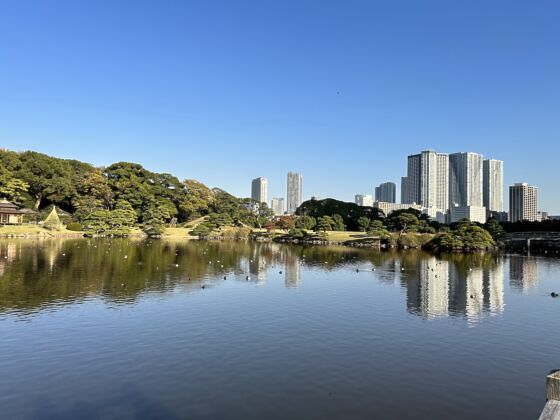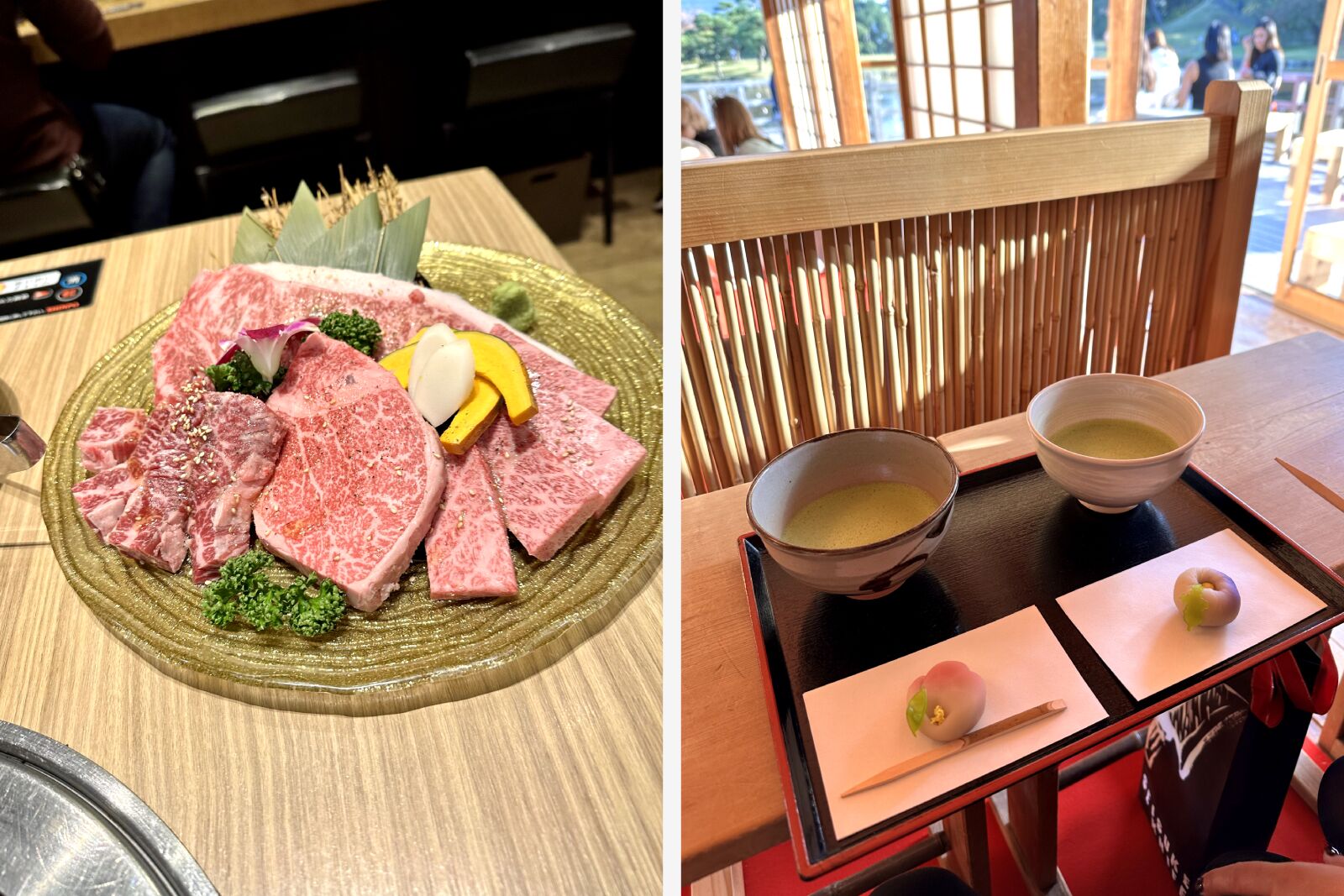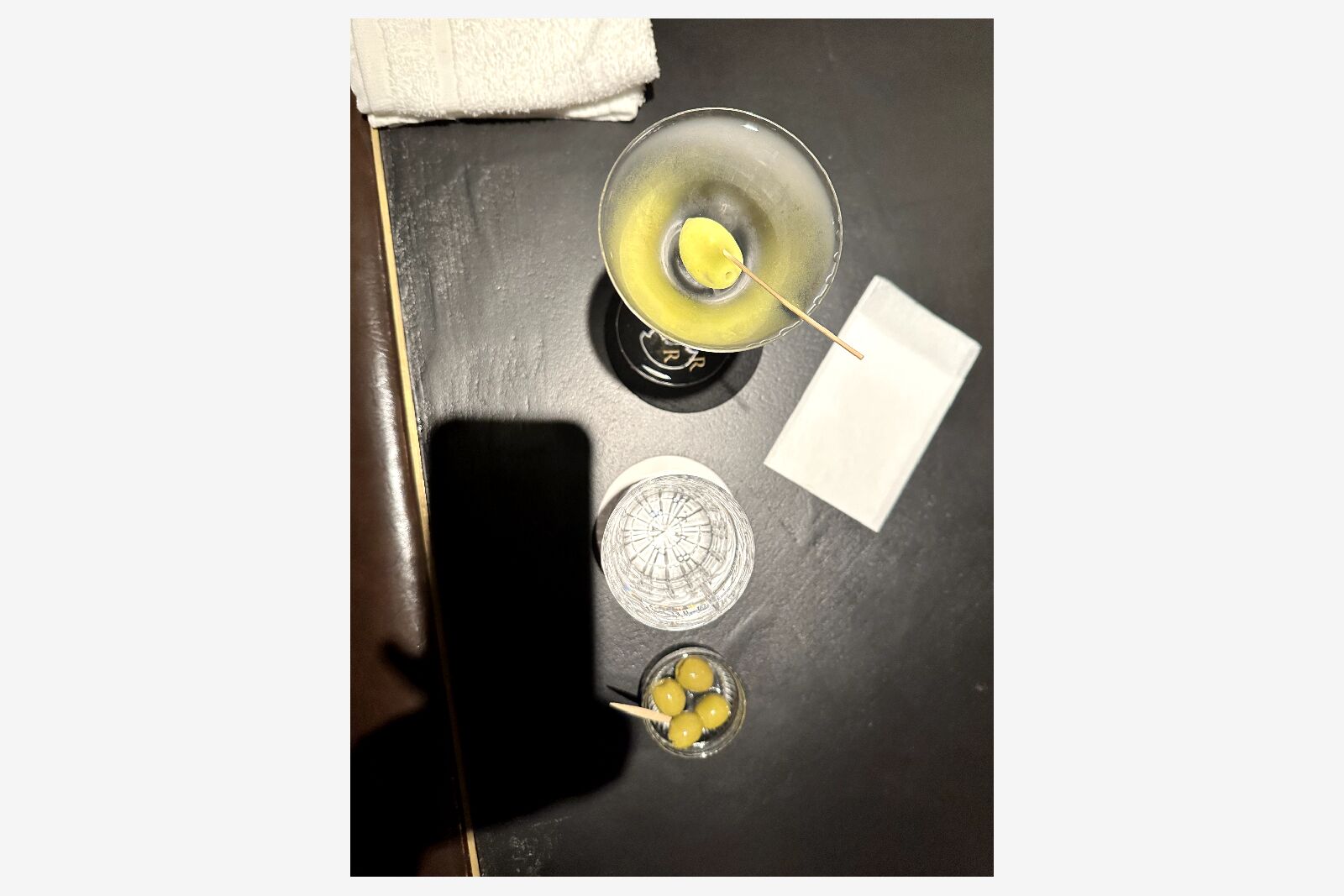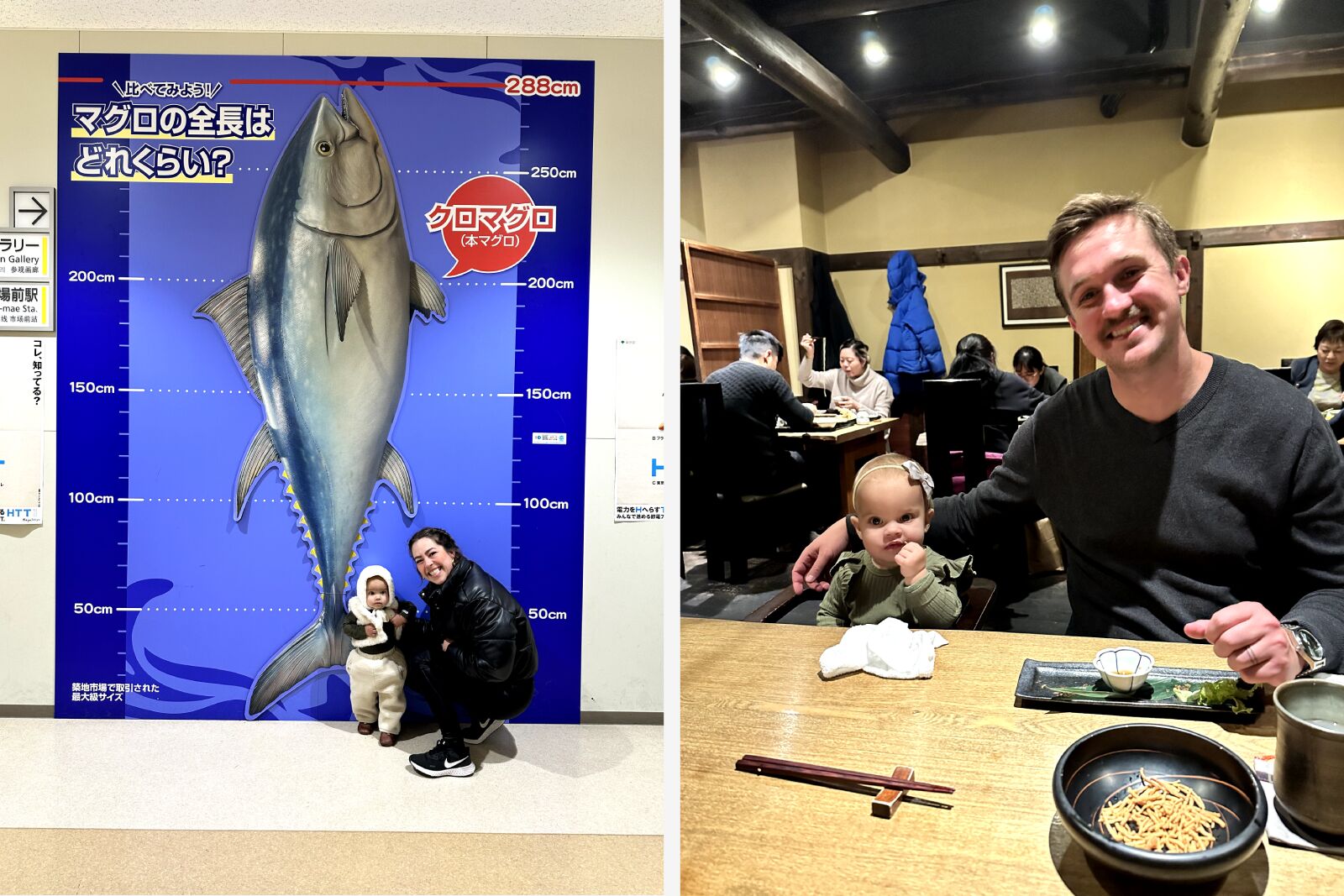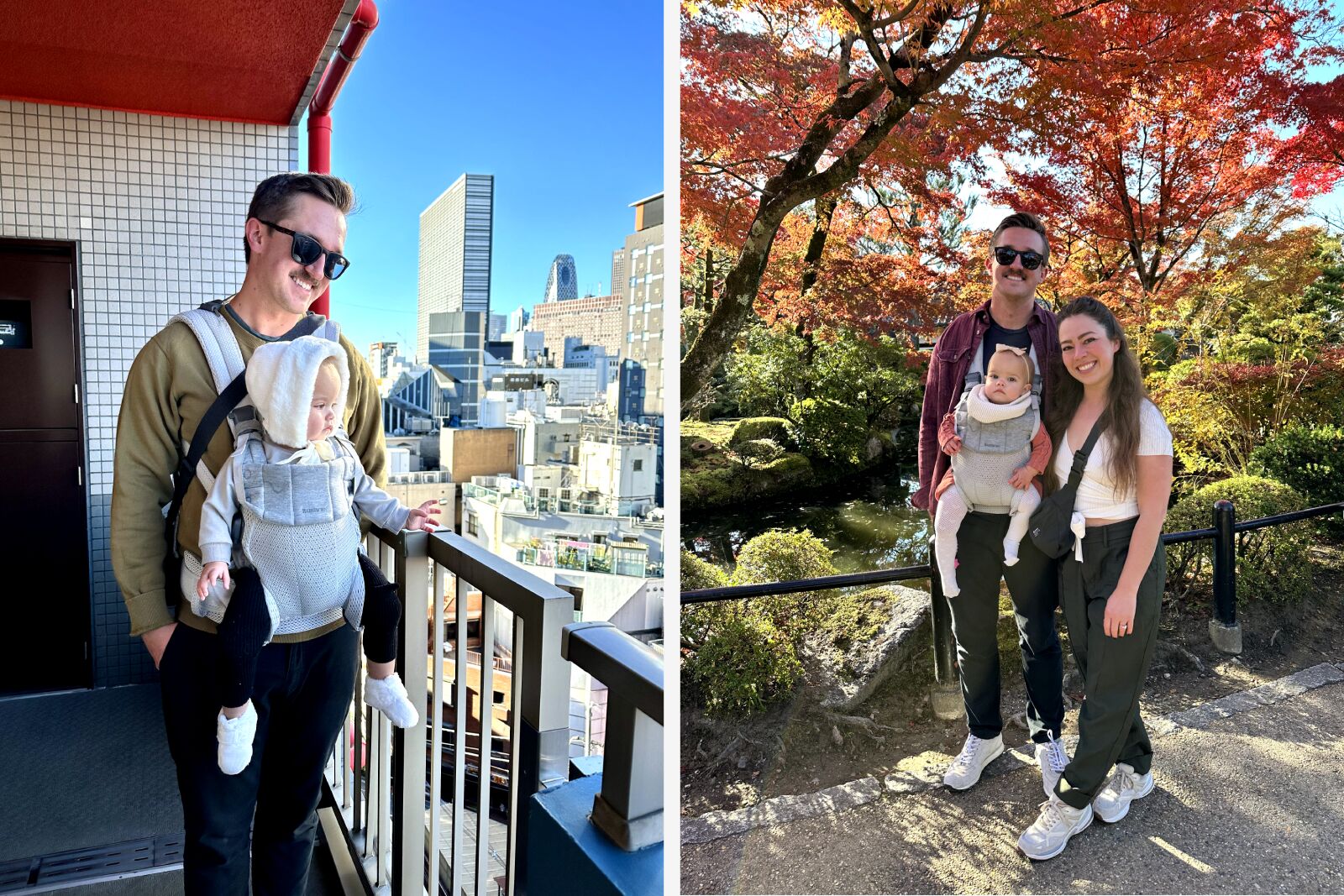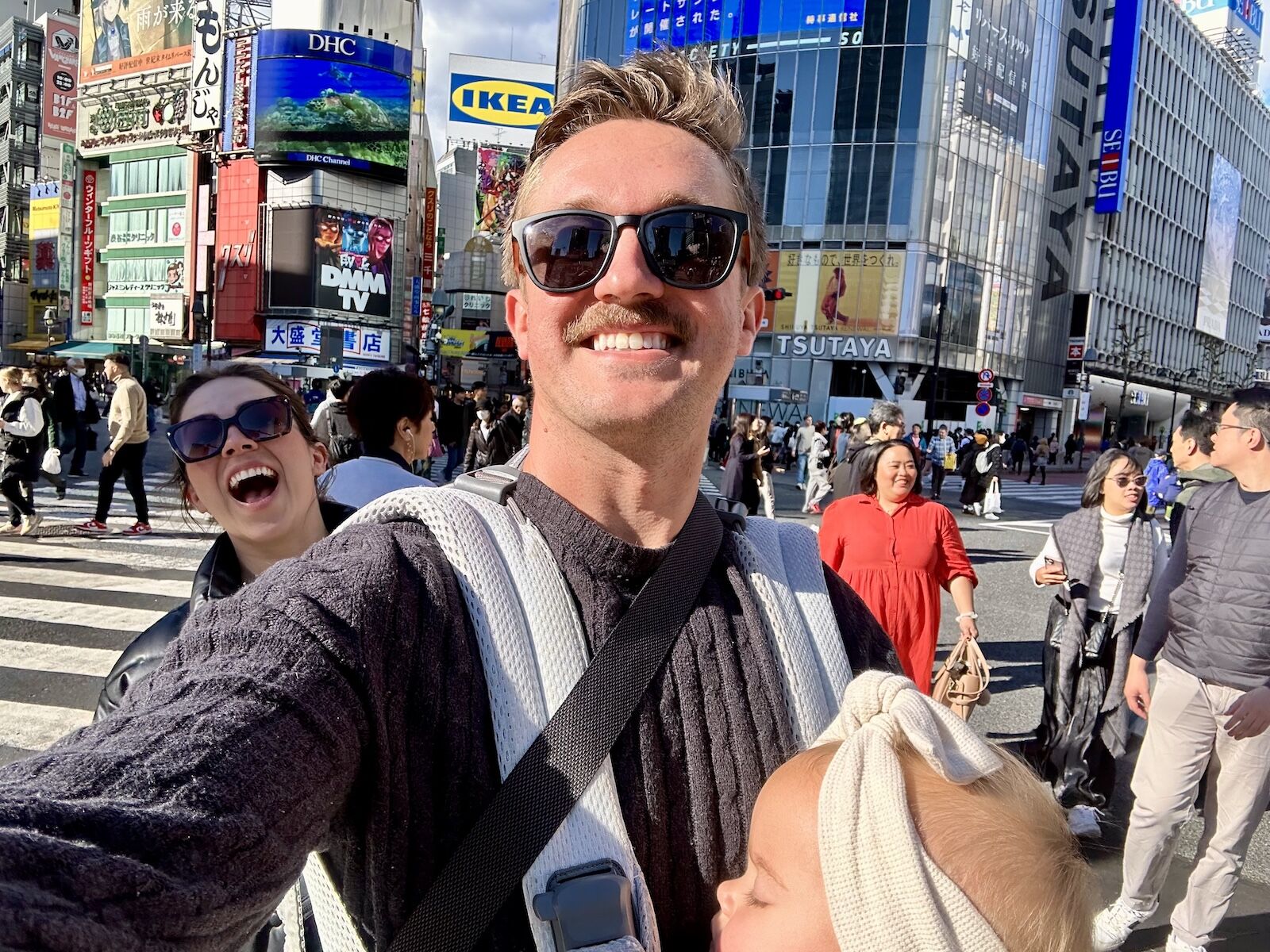This is part of the “Places That Changed Us” series, a compilation of 20 trips that have had a lasting impact on the Matador Network team. To see the other 19 places, click here.
The first thing I did after dropping my bags at our Tokyo Airbnb in Shinjuku was to head to the 7-Eleven on the corner. My wife Heather, 1-year-old daughter Margot, and I were famished after a five hour delay on our 11-hour flight from Denver, and didn’t arrive until close to midnight on Thanksgiving week in 2023. I’d heard about Japan’s famous 7-Eleven food and couldn’t think of a better first meal than some noodles, a katsu sandwich, and bottle of sake. They weren’t the best noodles we had on the trip of course, but my daughter immediately picked up how to properly noodle slurp and started her love for Japanese noodles that hasn’t wavered even now more than a year later.
